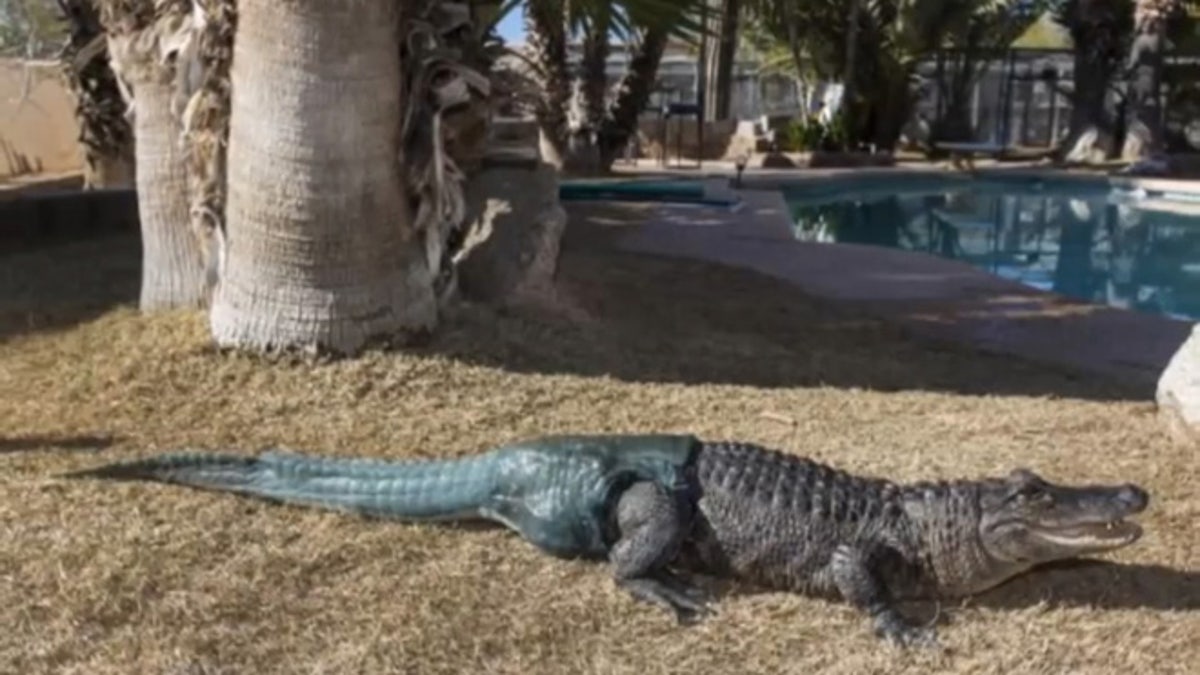
Mister Stubbs, posing with his new prosthetic tail. (Teletechnology)
An alligator stuck with the ungainly name "Mister Stubbs" may need a new moniker now that his stump of a tail has been fitted with a lifelike prosthetic.
The alligator, which lost his tail as a youth after a run-in with another gator, was brought to the Phoenix Herpetological Society (PHS) in 2005 after he and 31 other alligators were discovered by police as part of an illegal shipment of exotic animals, the Arizona Republic reports.
[pullquote]
Inspired in part by the film "Dolphin Tale," in which a dolphin is given an artificial tail, a team of experts dove into the task of discovering the type of tail a gator would need. No one had previously researched the center of gravity, weight or buoyancy of an alligator tail.
The animal's caretakers were aided by local experts from Midwestern University, a health-care college in Glendale, Ariz., and the CORE Institute in Phoenix, which specializes in orthopedic and prosthetic care for humans, ABC News affiliate ABC15.com reports.
Alligators are powerful swimmers, but as a youth, Mister Stubbs had to be taught to dog-paddle using his front legs, a poor substitute for an alligator's muscular tail. Most gators' tails comprise about half their body length, and are used for everything from swimming to constructing muddy "gator holes" to stay cool during periods of drought.
Though there were a few stumbling blocks in the development of the tail — an early version took on water and sank, taking the reptile with it — researchers are now encouraged that Mister Stubbs seems to be adapting to the new 3-foot-long rubber tail, which is attached with nylon straps. An inflatable water wing slipped over the prosthetic tail helps the alligator stabilize in the water.
Mister Stubbs will have plenty of time to get used to the new device: He's relatively young at just 11 years, and gators can live more than 70 years in captivity. And because adult male alligators have been reported as long as 20 feet in length, Mister Stubbs, now at 7 feet including prosthetic, will need to be fitted with a larger tail as he grows.
"He is going to have a long and happy life here," Russ Johnson, president of the PHS, told the Arizona Republic. "Right now, I want to get him to the point where he doesn't need that floaty anymore. That way, the other gators will stop making fun of him."
Copyright 2013 LiveScience, a TechMediaNetwork company. All rights reserved. This material may not be published, broadcast, rewritten or redistributed.
